Your outdoor patio is a place that will make your time at home more pleasant. This becomes a spot for your family to gather together and enjoy quality time together. There are a variety of materials available to create your patio and all of the options can make choosing one tricky.
A patio space is open to all the weather. Snow, rain, summer heat, and winter frost will come into contact with your patio. Therefore, the building material of your patio must be able to stay functional in any weather conditions. In this article, we will look at the pros and cons of seven popular patio materials.
Asphalt
First up, we have asphalt. The main advantage of asphalt is that it is one of the cheapest and most low-maintenance choices for your backyard. This is also a flexible material and a good option for an area with drastic temperature variations. However, high heat has a bad impact on asphalt coverage. Warmth causes it to soften and when it re-hardens cracks and sags often result. However, cracks can be sealed for a low price, so it is not a big problem.
So how does an asphalt patio look? In contrast to what you may think, asphalt doesn’t always look dull. You can create designs or color coating to make it look more appealing. Asphalt is a durable material; however, it’s used mostly for driveways and not often in patios. To save some money, though, you can choose to use it for your yard.
Concrete
Concrete costs a bit more than asphalt, but the lifespan of concrete patio floors is higher. Like asphalt, concrete is easy to maintain but it does have a poor reaction to extreme cold. In frosty winters concrete can heave, buckle, and crack. To prevent this, you can take some measures to winterize concrete. Concrete does offer a wide range of visual options. Its finish can be stamped, scored, smoothed, colored, patterned, surfaced with some other materials, and so on. You can even add animal footprints or geometric patterns to concrete. This material is perfect if you are building a custom-shaped patio.
Pavers
Pavers are one of the most DIY-friendly types of materials for patios and outdoor spaces. They also look the most appealing. Pavers can be produced from concrete, clay, stone, or even recycled materials. Concrete or stone pavers are the most recommended types when planning a patio. They last longer, and concrete pavers can be produced in many different color blends to match a variety of styles & colors to compliment the home’s exterior. The main disadvantage of pavers is that they can spread over time. To prevent the change of your patio’s shape, you’ll need to make sure a suitable aggregate base below the pavers has been installed. Also, you should have a sturdy perimeter edge restraint. When the edge of the pavers meets landscaping or grass, the pavers must be restrained with either a concrete troweled edge or metal/plastic edging designed for pavers.
Pavers can be laid in any number of layouts, complex patterns, and shapes. This leads to many opportunities for unusual designs. Pavers can be different. Concrete pavers alone can look like flagstone, clay bricks, or cobblestone.
Natural Stone
Patios made of natural stone look classic, elegant, and all in all, irresistible. Natural stone costs more but it will pay off with its durability since natural stone patios will last at least a lifetime. If a stone breaks, it is possible to replace it without touching the rest of the coverage. Keep in mind, though, that this material becomes very hot in the sun and slippery after rain.
Natural stone patios are also difficult to install. It is unlikely that you will be able to do it without the help of a professional. Natural stone pavers are heavy, and every stone has a varying thickness, so this makes it hard to make a smooth surface out of them. Laying a natural stone paver patio takes a lot of time.
Flagstone
Many people prefer flagstone to other types of patio covers since it has a natural-looking and timeless appearance. Flagstone is usually red, blue, or beige and are irregularly shaped and varied in size. There are different types of this material including sandstone, bluestone, and limestone. Each has a different quality, and each requires different care. Flagstone is slightly rough, so it doesn’t get slippery after rain. They are heavy, and not conducive to an inexperienced DIY lover. Keep in mind, though, that a thoughtful flagstone patio design needs adequate drainage to reduce the effects of erosion.
Gravel
Gravel patios are attractive and usually associated with English cottage-style gardens. This is probably the easiest-to-install material – even beginners have no problems with it. However, due to weeds, the gravel patio is more difficult to maintain. To prevent weeds, you will need to install gravel over landscaping fabric. Also, you’ll need to keep the surface level and rake stones from time to time. An advantage of gravel is that it has a low cost and offers good drainage. However, it doesn’t provide good support for outdoor furniture and is uncomfortable to walk barefoot.
In a nutshell, set your choice upon gravel if your priority is a quick and easy installation.
Sand
Sand is usually used as a leveling bed for other patio materials (for example, with clay brick or cut stone). However, you can use sand by itself. You may have already guessed that installing a sand patio is not rocket science. Only gravel can be laid as easily.
Although sand is a low-cost option, using sand as a patio cover is not for everyone. A few disadvantages to a sand patio are furniture stands uneven on the sand, and you wouldn’t want to spend time on a sand patio after rain. However, if your patio is beach- or tropical-themed, or you have a pool in your yard, this could be a good option for you.
Contact us (859-640-0657) for a free consultation!
—
 About Presentable Landscaping
About Presentable Landscaping
Presentable Landscaping provides many landscaping services to our customers in Northern Kentucky and Greater Cincinnati.
- Clean ups
- Pruning / Trimming
- Paver Patios
- Mulching
- Retaining Walls
- Drainage
- Leaf Removal
- Gutter Cleaning

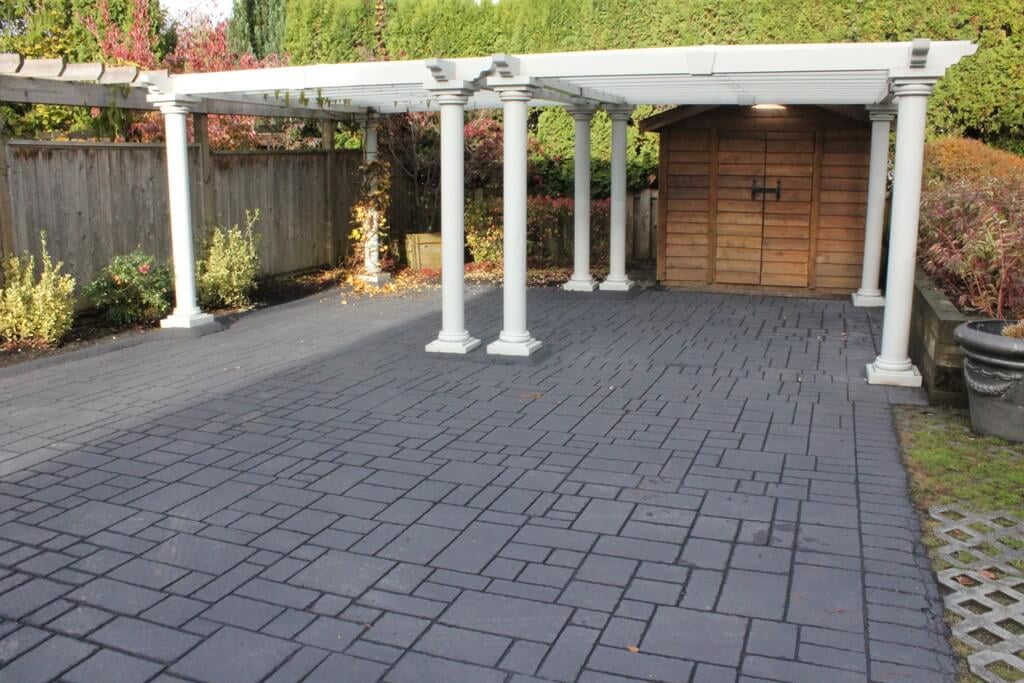
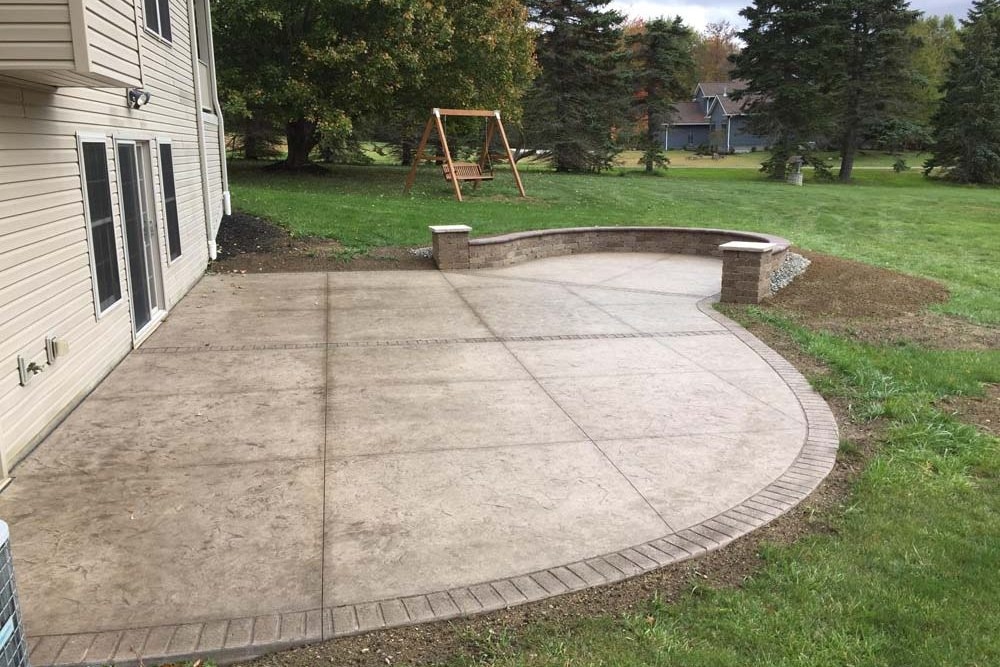
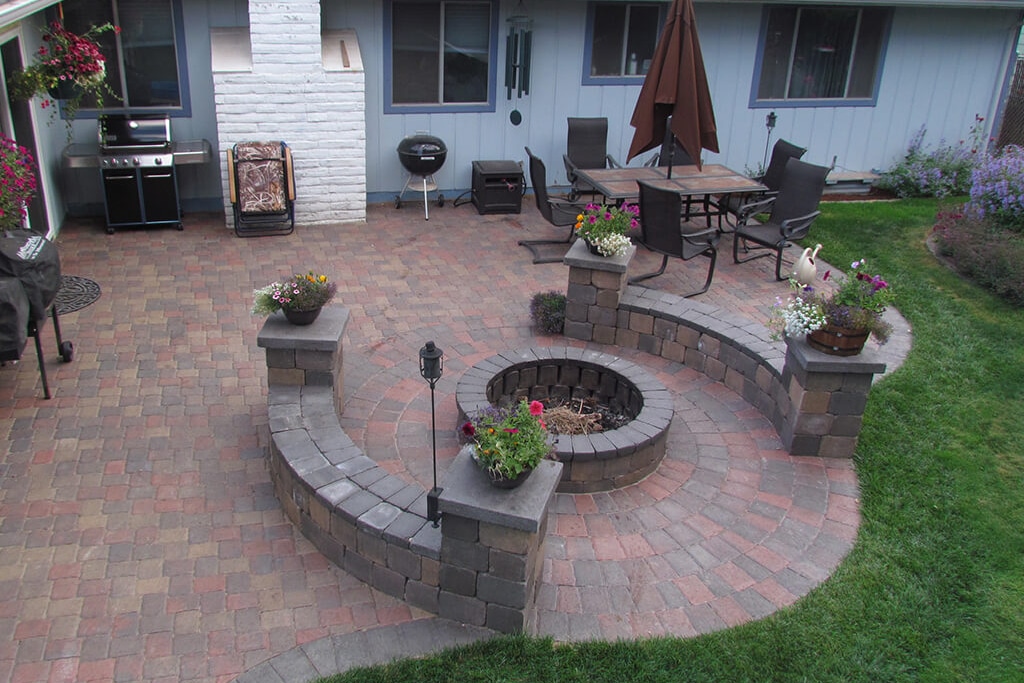

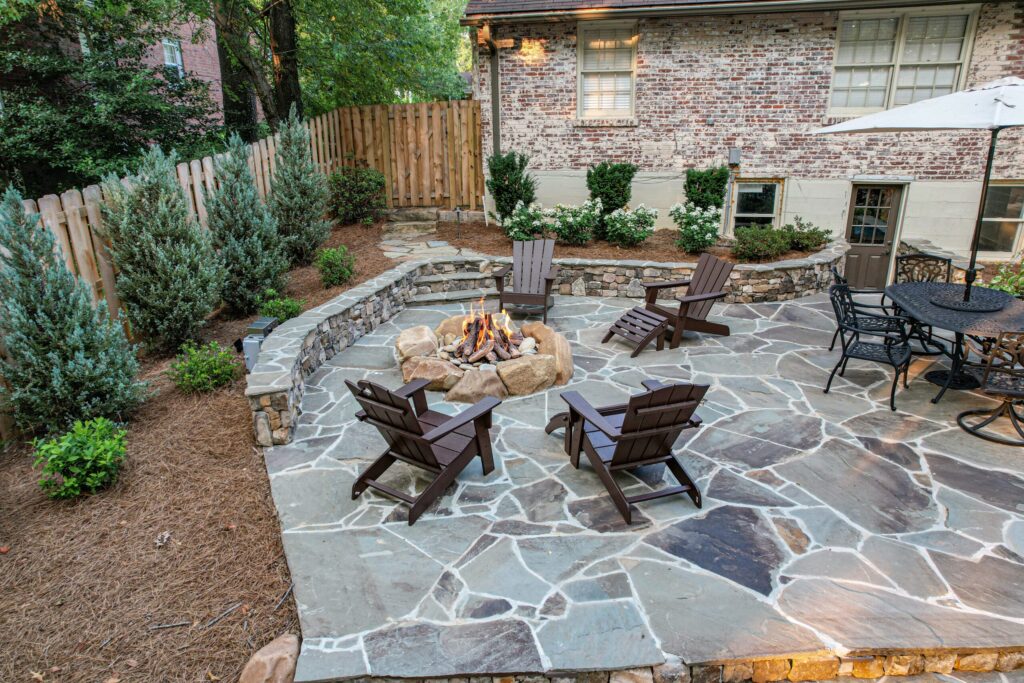

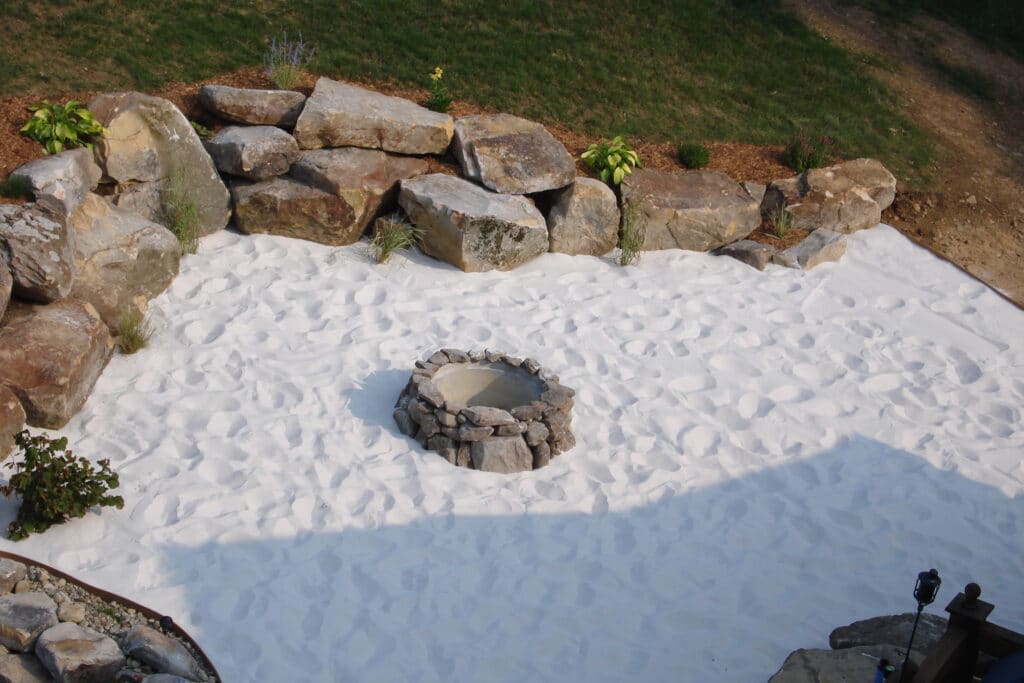
 About Presentable Landscaping
About Presentable Landscaping